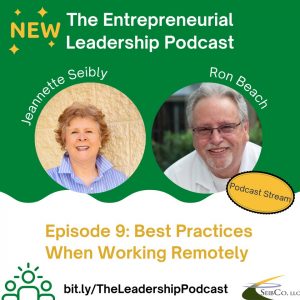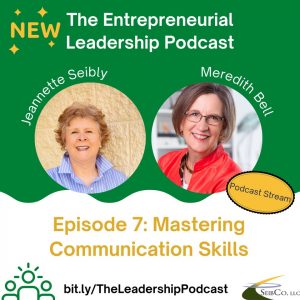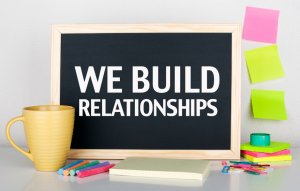
Quiet hiring is a way to develop talent without hiring new employees or moving current employees to work when you cannot hire the right people. It was declared a new trend by Gartner, a technological research and consulting firm: Quiet hiring will open up new doors for retaining talent without the cost of a lengthy recruitment process.
While “quiet hiring” is new, the strategy is not. Wise companies have used “internal mobility or upskilling” to keep top talent for many years.
But before you jump on this “newest trend,” here are the issues to address before considering this strategy.
How to Use Quiet Hiring
Quiet hiring is how employers fill positions with current employees and leverage current talent. Normally, it’s done on a temporary basis, or you risk employment law issues.
For example:
- If your company is a bank and needs someone at the teller window for several hours a day, it’s an excellent opportunity for a loan officer to learn more about the bank and its customers’ needs.
- If your insurance company needs help in the claims department for a month, you may have one of your underwriters work there temporarily.
- If your company is in any industry and needs help auditing for a quarter, you may place one of your IT people in that role.
What Are Three Criteria to Implement Quiet Hiring?
- It would be best if you had buy-in from your employees. Remember, any change can be scary to them. Be sure to communicate the intention, what is expected, and the benefits to everyone, not just those being “quietly hired” into new roles. Remember, it’s a temporary change and will not affect their benefits and compensation plans.
- How to Start the Conversation. You may say, “We/I value your contribution and would like to temporarily use you in a different role (or to take on additional responsibilities). Are you willing to do so?”
- Stay Connected. If there are problems before or after the transition, it’s essential to address them immediately. Remember that different teams have different work styles, and bosses have different work expectations (e.g., remote v. onsite, punctuality v. lateness).
How You Use Quiet Hiring to Improve Your Employees’ Skills
- Provides Skill Development. It’s a great way to help broaden an employee’s knowledge of the company. It allows them to experience how their normal position impacts the temporary one. Acquiring these new skills prepares them for promotions, new work teams, and other future opportunities.
- Reduces the Need for Layoffs and Terminations. It’s a great way to keep good employees by temporarily moving them into different roles or departments.
- Helps Them Understand the Impact of Work Quality and Decisions. The added benefit of quiet hiring is that they can learn about the impact they create when making changes in how they do their work or when making decisions. For example: Moving a sales rep into customer service is a great way to experience the aftermath of how the company’s products and services work with customers. (Also known as cross-training.)
- Training is Critical! Like anything new, it’s essential that you provide a training program and on-the-job training coach to ensure consistency in how work is done. Remember, they are transitioned to the new position temporar If they make any changes, it can inadvertently impact the entire company and its customers.
- Participate in Job Rotation or Job Sharing. These are more formal ways that “quiet hiring” top talent can develop the skills required for future opportunities.
Beware of “Quiet Hiring” Pitfalls
- Job Fit Issues. Placing a good employee in a position that does not fit their capabilities means you will lose a good employee. Use a qualified job fit assessment to reduce these types of issues. Remind them it’s temporary. However, if there are consistent problems, you must move them back to where they were doing well.
- Unwillingness to Move to New Position. If the move requires the person to be onsite or the person has other concerns such as commute and flex time, address them upfront. It costs time, money, and energy to train people in positions they usually don’t work in; since it’s only temporary, it may not be worth the effort or upset.
- Keep the Same Benefits and Comp. If you don’t, you will risk employment law concerns. Contact your HR or employment attorney to determine local, state, and federal impacts — also the same for international employees.
©Jeannette Seibly 2023 All Rights Reserved
 Jeannette Seibly is The Leadership Results Coach. She has over 30 years of award-winning international experience as an executive consultant, speaker, and business author. Her clients surpass the norm by working through sticky situations and challenging relationships to become positive influencers. Contact Jeannette for a confidential discussion.
Jeannette Seibly is The Leadership Results Coach. She has over 30 years of award-winning international experience as an executive consultant, speaker, and business author. Her clients surpass the norm by working through sticky situations and challenging relationships to become positive influencers. Contact Jeannette for a confidential discussion.
A note from Jeannette about Quiet Hiring: This old employment practice of moving people temporarily into different positions now has a new name: Quiet Hiring! Before you jump on this latest trend, understand the legal, practical, and employee impacts before using! Then, contact me to talk through your hiring and selection challenges!
NOTE: Do you want to win? All leaders who are winners have coaches! I love coaching leaders and have for over 30 years! Contact me if you want an in-depth, one-on-one hour over 13 weeks. Having a coach speeds up your ability to influence others, hire the right people, and coach your team for unprecedented results.
 Announcing New Workshop! Traditional leadership (e.g., formal, metrics-driven) is being replaced with human leadership (e.g., focus on the human dynamics that impact results). For example, “That’s how it’s always been done.” vs. “Great idea. How do you recommend we implement it?” However, your managers and directors are being overlooked regarding the training required to be an effective boss and leader. Read about my newest workshop: Are Your Managers and Directors Effective Leaders?
Announcing New Workshop! Traditional leadership (e.g., formal, metrics-driven) is being replaced with human leadership (e.g., focus on the human dynamics that impact results). For example, “That’s how it’s always been done.” vs. “Great idea. How do you recommend we implement it?” However, your managers and directors are being overlooked regarding the training required to be an effective boss and leader. Read about my newest workshop: Are Your Managers and Directors Effective Leaders?


 Jeannette Seibly is The Leadership Results Coach. She has over 30 years of award-winning international experience as an executive consultant, speaker, and business author. Her clients surpass the norm by working through sticky situations and challenging relationships to become positive influencers.
Jeannette Seibly is The Leadership Results Coach. She has over 30 years of award-winning international experience as an executive consultant, speaker, and business author. Her clients surpass the norm by working through sticky situations and challenging relationships to become positive influencers.  This week’s PODCAST: Listen to Want to Achieve Great Results? Use Peer Coaching with my guest, Meredith Bell, on
This week’s PODCAST: Listen to Want to Achieve Great Results? Use Peer Coaching with my guest, Meredith Bell, on 
 This week’s PODCAST: Listen to How to Be an Effective Advocate and Be Heard with my guest, Jill Tietjen, on
This week’s PODCAST: Listen to How to Be an Effective Advocate and Be Heard with my guest, Jill Tietjen, on 
 This week’s PODCAST: Listen to “Best Practices When Working Remotely” with my guest, Ronald Beach, Ph.D., on
This week’s PODCAST: Listen to “Best Practices When Working Remotely” with my guest, Ronald Beach, Ph.D., on 
 This week’s PODCAST: Listen to Grow your side hustle into a full-time job with my guest, Bobby Crew on
This week’s PODCAST: Listen to Grow your side hustle into a full-time job with my guest, Bobby Crew on 
 This week’s PODCAST: Listen to the Mastering Communication Skills with my guest, Meredith Bell, on
This week’s PODCAST: Listen to the Mastering Communication Skills with my guest, Meredith Bell, on 
 This week’s PODCAST: Listen to How the pandemic led a professional copywriter, speaker and author to become an accidental artist with my guest, Debra Jason, on
This week’s PODCAST: Listen to How the pandemic led a professional copywriter, speaker and author to become an accidental artist with my guest, Debra Jason, on 
 This week’s PODCAST: Listen to the Moments of Brilliance: You Don’t Have to Have the Answers! with my guest, Denise Roberts, on
This week’s PODCAST: Listen to the Moments of Brilliance: You Don’t Have to Have the Answers! with my guest, Denise Roberts, on 
